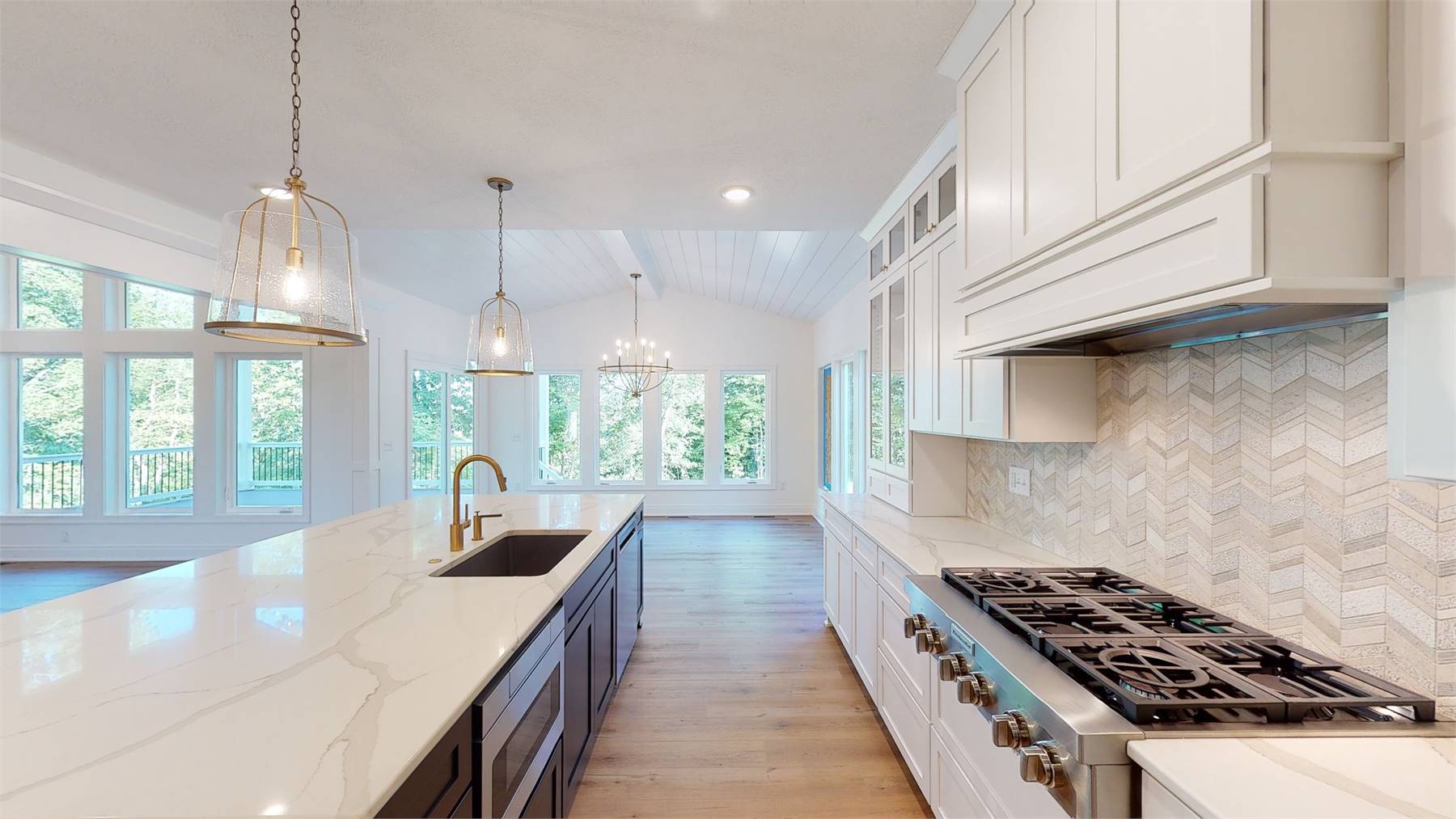Lighting Up Your Home
One of the most important elements in home interior decorating is home lighting. Lighting is instrumental in setting the mood of any room. When deciding what lighting to use in your new home think about how each room will be used. This will allow you to choose fixtures that fit your style, budget, enhance your architectural features and are energy efficient and functional. To ensure you create the right effect in every room, you should understand the four basic types of home lighting.
With pendant lighting over the island an a chandelier over the dining area,
House Plan 7175 shows how fixtures can dress up your interior design and help beyond natural and recessed lighting.
Ambient or general lighting illuminates the whole room. It is a good idea to install a dimmer with your track and recessed lights so that you have the flexibility to adjust the brightness. Examples of ambient lighting are recessed, cove lighting, soffit lighting, valance lighting, wall light, sconces, surface-mounted lights, pendant lights, track lights, chandeliers, under-cabinet lights and portable fixtures.
Task lighting provides sufficient light to help you perform the task at hand, for example cooking, office/school work, reading, grooming, etc. Task lighting should be glare free and it should make things easy to see without tiring or straining your eyes. Examples of task lighting are valance lighting, recessed lighting, pendant lights, under-cabinet lights and portable fixtures.
Accent lighting is focused lighting that is used to illuminate an object in your home like a sculpture, piece of art, or architectural element. Accent lighting is about three times as bright as ambient lighting. Examples of accent lighting are wall washers, sconces, track lights and under-cabinet lights.
Natural lighting comes through windows, doors, and skylights and depending on the time of day, season, or weather, it can vary in brightness and intensity.
Some general design trends to keep in mind to help you choose the right type of lighting for every room in your home.
- Since the average home has increased in size, particularly with design elements like high ceilings, open floor plans and expanded kitchen and bath areas be sure the fixtures you choose are large enough to handle the task at hand.
- You may need more lighting and larger fixtures, but you don't need to add to your electric bill — purchase ENERGY STAR® rated fixtures, use compact-fluorescent lamps (CFLs), LEDs (light-emitting diodes), dimmer switches and whole-house control systems.
- To accommodate the trend in high ceilings, manufactures are now designing floor lamps that are nine or ten feet high — the standard size is eight feet.
- Consumers are moving away from the plastic and resin look and opting for Old World-styling look with brass and copper fixtures.
- A big trend to brighten up task areas is using recessed lighting, under-cabinet lights, mini pendants and island lighting.
- As more and more homeowners look to enhance their outdoor living space, lighting is becoming a key element in enjoying their decks, patios, outdoor kitchens, pools and spas. The selection for outdoor lighting is as stylish and functional as indoor lighting.
Design Tip
Ceiling fans have become a key lighting design element in new homes thanks to the variety of design options available. They are popular not just for their breeze, but their ability to blend with your home's décor, particularly with recessed and decorative ceiling lighting. When choosing a ceiling fan be sure it meets the needs of the room you're placing it in. Soaring ceiling and expansive great rooms require larger blades, longer down rods and powerful motors. Most of the rooms in your home would benefit from a ceiling fan, particularly bedrooms, bathrooms, kitchens and porches. The good news, they only use as much energy as a 100-watt light bulb.



.png)
.png)


